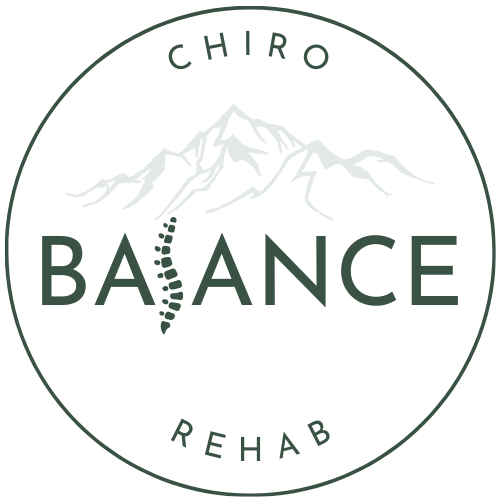From Head to Toe: Understanding the Role of Fascia in Your Body's Functioning
Have you ever wondered how your body stays coordinated, flexible, and balanced? The answer lies in a complex web of connective tissue called fascia. Whether you're a mom seeking comfort during pregnancy, relief or back to activity in the postpartum period or optimizing your infant’s feeding and/or development, fascia is a major component.
From (quite literally) head to toe, fascia acts as a continuous network that encompasses every muscle, bone, organ, oral structures and nerves. It not only provides structural support, but also plays a crucial role in transmitting mechanical forces (think of absorbing and dispersing the impact of your foot striking the ground when walking) the and maintaining fluidity of movement.
What is fascia?
Fascia is a tough and flexible connective tissue that surrounds and supports muscles, bones, and organs throughout the body. It is made up of collagen fibers that form a continuous network, creating a three-dimensional web that holds everything together. Think of fascia as a plastic wrap that encases and separates different structures in the body OR as the white parts of an orange keeping structures separate, but uniquely whole.
The role of fascia in the body
The role of fascia goes beyond providing structural support. It acts as a communication system, allowing different parts of the body to work together seamlessly. Fascia also plays a vital role in transmitting mechanical forces, such as the tension generated by muscles during movement. This interconnectedness of fascia allows for efficient distribution of forces and optimal functioning of the body as a whole. It also acts as a lubricant, reducing friction between muscles, tendons, and other tissues. This allows for smooth and efficient movement, preventing unnecessary strain and wear and tear on the body as well as shielding delicate structures and allowing them to move smoothly against each other
Fascia is not just a passive structure; it is also highly innervated and has a rich blood supply. This means that it has the ability to sense and respond to changes in the body and helps to regulate muscle tone and joint stability. How. Cool. Is. THAT?!
Fascia and movement
When muscles contract, they pull on the fascia, which in turn pulls on the bones and other structures. This creates a chain reaction, with forces being transmitted from one part of the body to another. For example, when you take a step, the force generated by the contraction of your calf muscles is transmitted through the fascia to your foot, propelling you forward.
In addition to transmitting forces, fascia also helps to distribute forces evenly throughout the body. It acts as a shock absorber, reducing the impact on joints and other structures during movement. This helps to prevent injuries and allows for more efficient movement.
Fascia and pain/dysfunction
Fascia thickens in response to injury and trauma, creating areas of tension and strain which may result in structural distortion which can impact the musculoskeletal system globally as well as the central nervous system. Think about a time you stubbed your toe (physical stress) or slammed on your brakes to avoid an accident (emotional stress). Do you think your body tightened up in response or felt more relaxed immediately following? Healing and growth occur in a parasympathetic state (rest and digest) NOT in a sympathetic state (fight/flight or freeze). In short, if we can’t relax our nervous system, we can’t heal our bodies and if our bodies are in pain, it’s difficult to regulate the nervous system. As an example, this is why many newborns with reflux have very up-regulated nervous systems.
Fascia frequently plays a massive role in the development of pain and dysfunction. When fascia becomes tight, restricted, or inflamed, it can lead to a decrease in the ability of of nerves, muscles, and other structures to easily glide between around each other, leading to compensation and tension patterns as well as potential dysfunction throughout the entire body. This can manifest as dysfunctional movement patterns in adults, colic/fussiness and feeding concerns in babies and discomfort for all populations.
Common fascia-related conditions
It’s rare to have an area of pain or dysfunction without having some degree of fascial involvement. Since nearly everything in the body is coated by this amazing structure, tension from a tongue tie can cause torticollis and a flat spot (plagiocephaly) and vice versa. In-utero positioning or birth trauma can cause tension that mimics a tongue tie. A knee injury from childhood can contribute to hip pain during pregnancy. IT. IS. ALL. CONNECTED.
Techniques to help reduce fascial tension
Craniosacral Fascial Technique (CFT), gentle chiropractic, dry needling and rehab exercises are all my, Dr. Dani’s, favorite techniques to help improve mobility, function and decrease dysfunction and compensations caused by fascial tension. This combination helps to address the underlying cause, facilitate healing and establish new, healthy patterns to ensure long-term change.
The importance of hydration and movement for healthy fascia
Proper hydration is essential for maintaining healthy fascia. Hydration plays a crucial role in the health and function of fascia as it helps to keep the fascia hydrated and supple, allowing for a smooth and efficient gliding motion between two structures.
Just as fascia is imperative for movement, movement is imperative to fascia. Movement and mobility work help to improve tissue glide, decrease tension, pumps the cardiovascular and lymphatic systems and increases overall fluidity and function of the system.
Hey there!
My name is Dr. Dani and I’m an In-Home Chiropractor to busy individuals and families within the Denver Metro area. I love working with the pregnancy, postpartum and pediatric populations and strive for quality care through extended appointment times, follow-up recommendations and education so that you can feel both empowered and cared for!
Questions? Comments? CONTACT ME
Need some bodywork? BOOK HERE
Love the info and want to leave a review!? LEAVE A GOOGLE REVIEW
Looking for the fun stuff?
Instagram: @balance.chiro.and.rehab
YouTube: Dr. Dani Engle

